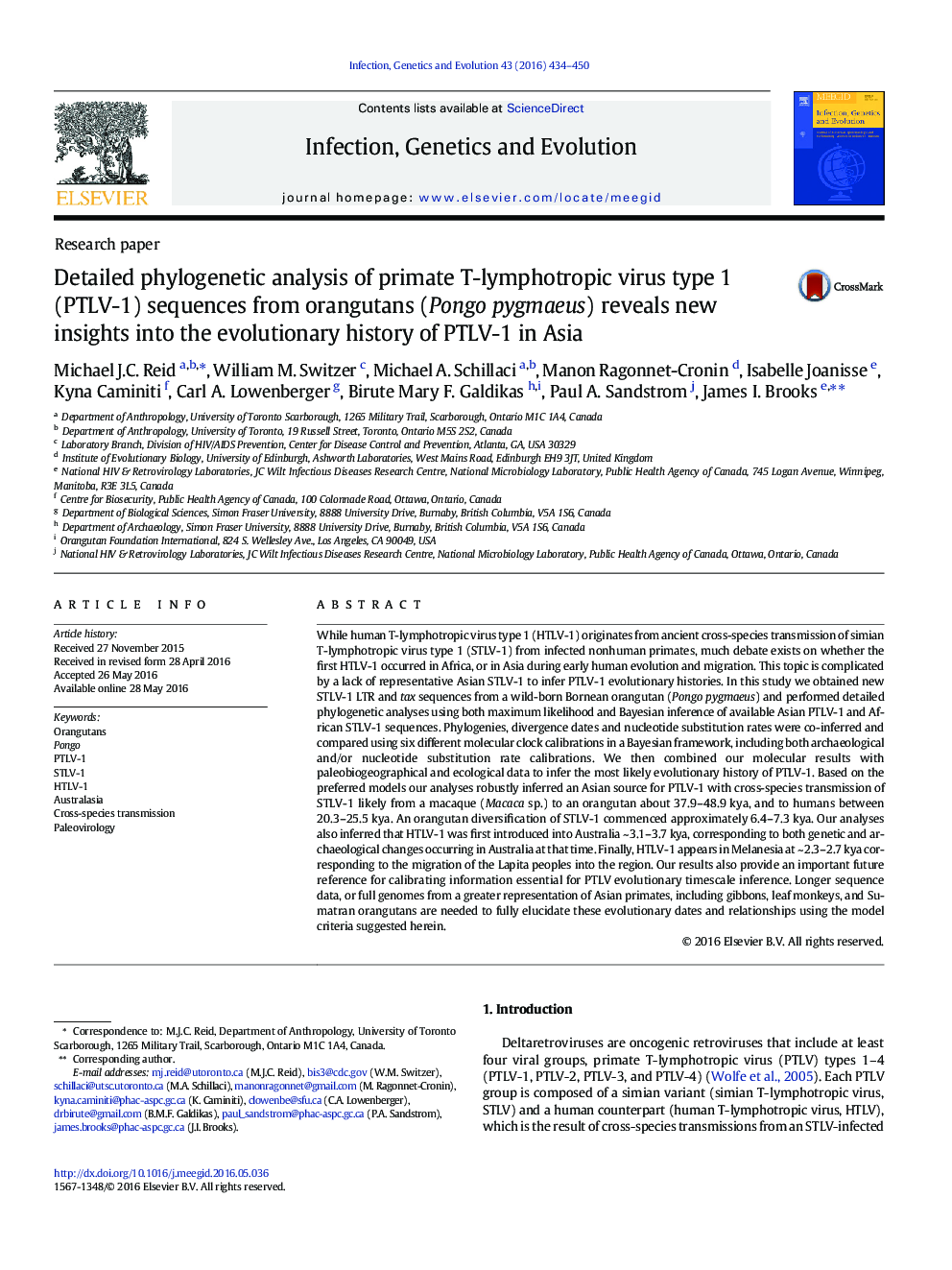| کد مقاله | کد نشریه | سال انتشار | مقاله انگلیسی | نسخه تمام متن |
|---|---|---|---|---|
| 2822984 | 1570160 | 2016 | 17 صفحه PDF | دانلود رایگان |

• PTLV-1 in orangutans dates to between 207.5 and 17.2 thousand years ago.
• PTLV-1 likely jumped from macaques to humans between 125.9 and 10.4 thousand years ago.
• Inferred dates using our PCM better fits archaeological record in Australasia.
• Large gaps in Asian STLV-1 sequence data remain including from Sumatran orangutans.
While human T-lymphotropic virus type 1 (HTLV-1) originates from ancient cross-species transmission of simian T-lymphotropic virus type 1 (STLV-1) from infected nonhuman primates, much debate exists on whether the first HTLV-1 occurred in Africa, or in Asia during early human evolution and migration. This topic is complicated by a lack of representative Asian STLV-1 to infer PTLV-1 evolutionary histories. In this study we obtained new STLV-1 LTR and tax sequences from a wild-born Bornean orangutan (Pongo pygmaeus) and performed detailed phylogenetic analyses using both maximum likelihood and Bayesian inference of available Asian PTLV-1 and African STLV-1 sequences. Phylogenies, divergence dates and nucleotide substitution rates were co-inferred and compared using six different molecular clock calibrations in a Bayesian framework, including both archaeological and/or nucleotide substitution rate calibrations. We then combined our molecular results with paleobiogeographical and ecological data to infer the most likely evolutionary history of PTLV-1. Based on the preferred models our analyses robustly inferred an Asian source for PTLV-1 with cross-species transmission of STLV-1 likely from a macaque (Macaca sp.) to an orangutan about 37.9–48.9 kya, and to humans between 20.3–25.5 kya. An orangutan diversification of STLV-1 commenced approximately 6.4–7.3 kya. Our analyses also inferred that HTLV-1 was first introduced into Australia ~ 3.1–3.7 kya, corresponding to both genetic and archaeological changes occurring in Australia at that time. Finally, HTLV-1 appears in Melanesia at ~ 2.3–2.7 kya corresponding to the migration of the Lapita peoples into the region. Our results also provide an important future reference for calibrating information essential for PTLV evolutionary timescale inference. Longer sequence data, or full genomes from a greater representation of Asian primates, including gibbons, leaf monkeys, and Sumatran orangutans are needed to fully elucidate these evolutionary dates and relationships using the model criteria suggested herein.
Journal: Infection, Genetics and Evolution - Volume 43, September 2016, Pages 434–450